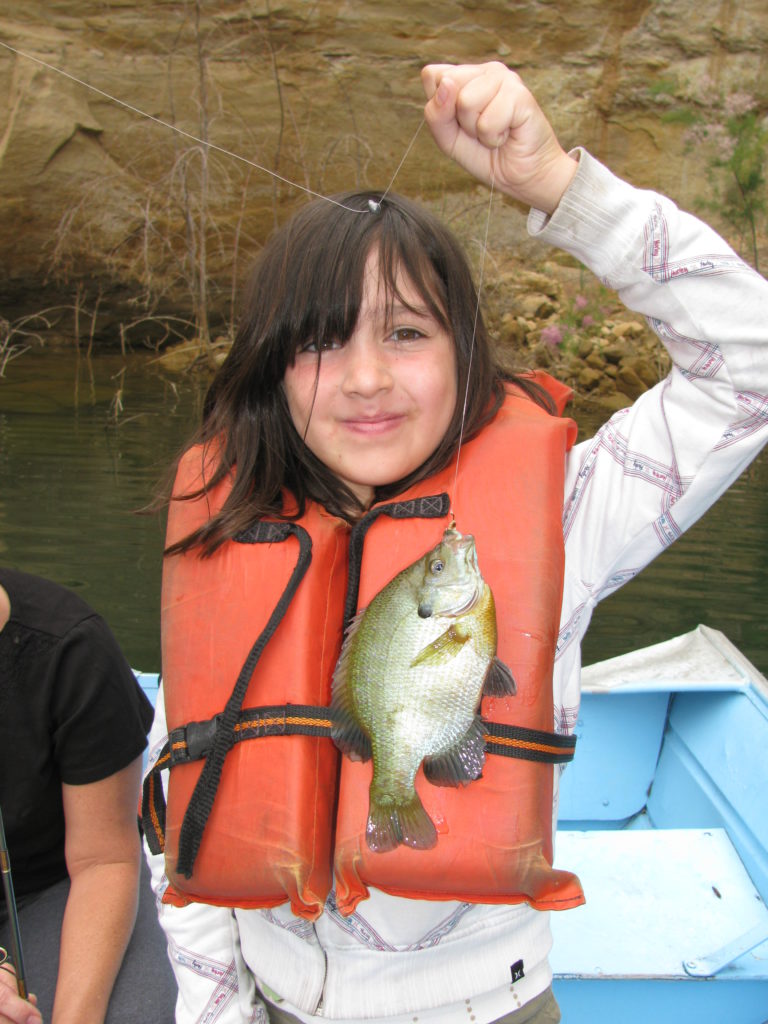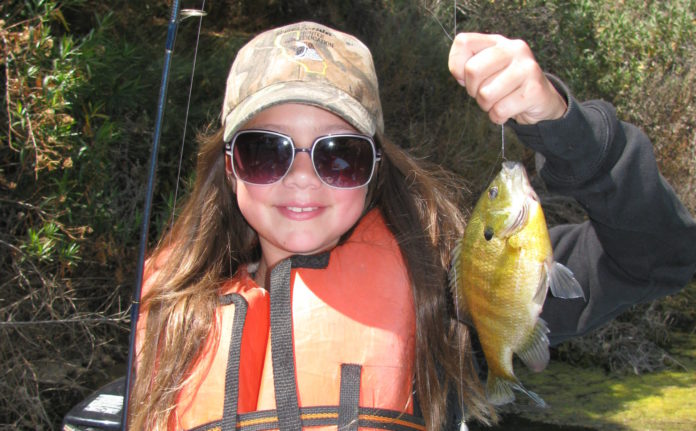
BY TIM E. HOVEY
Here in California, we’re fortunate to have several quality freshwater fishing options within an easy drive of just about anywhere. When I was younger, I cut my angling teeth fishing from the shore of many of the central and southern California reservoirs. Armed with whatever tackle I could afford at my young age, I’d fish for hours up and down the banks gradually finding what worked and what didn’t. Looking back now, I can say that my fishing journey clearly began at the shores of a California lake.
My early success came from targeting panfish, more specifically, bluegill and crappie. Using a bobber and some redworms I could usually fill a stringer in a few hours. Once I brought a few stringers home to eat, I started practicing catch and release regularly. Walking the banks of Lopez Lake, Santa Margarita Lake and a few others in the Central Coast region, I’d seek out submerged vegetation. From my youthful experience, this is where the fish hung out.
When minijigs hit the market I started regularly using those. After losing a few to the snags on the bottom, I started rigging them a few feet under a clear bobber. When fishing was hot, this technique proved deadly. It also hooked me up with a few respectable largemouth bass as well.
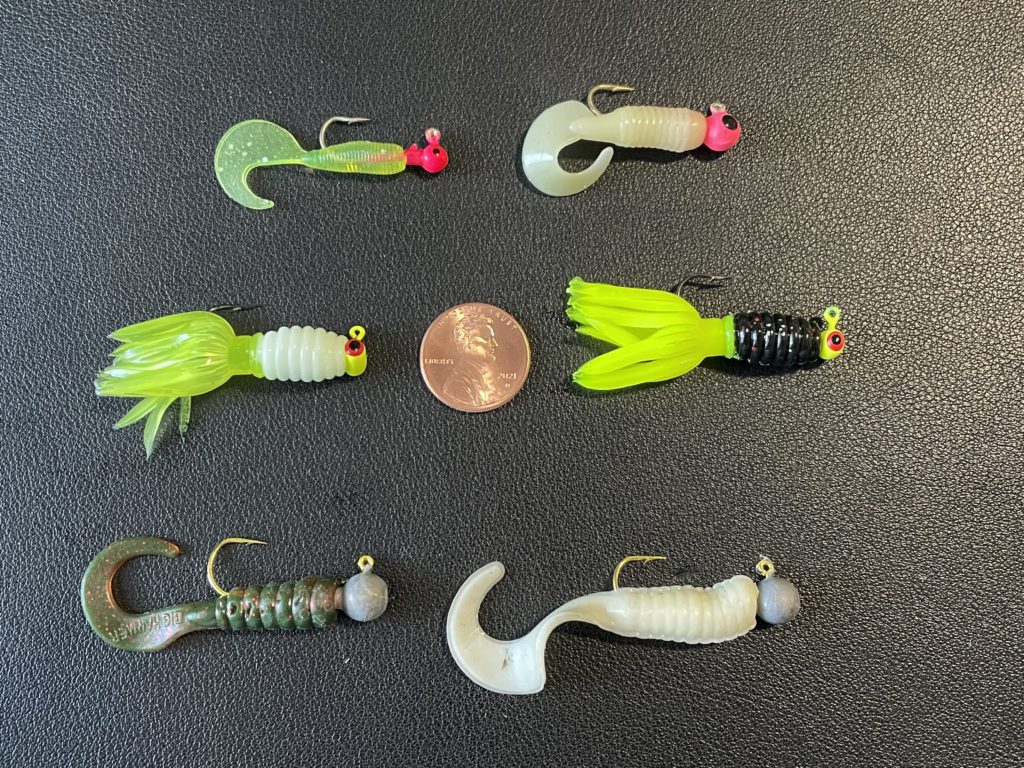
Without question, the key to catching panfish consistently is as simple as finding the fish. In the early spring, when the water temperature starts to warm (68-75 degrees), panfish begin to gather in the shallows to spawn. They can spawn up to five times a year and egg laying can continue throughout the summer. They prefer weedy, protected bays to construct nests and fishing during this time of year can be on fire. Due to the reproductive gathering, I always practice catch and release when fishing during the spawn.
I essentially have four methods when targeting panfish: bobber and worm, bobber and jig, free fishing a jig and fishing a weightless worm. Using just two rods, and switching between a small amount of terminal tackle, it doesn’t take much effort to have a great afternoon of fishing.
Using a standard red and white bobber and a small hook baited with a redworm, rigged 18 to 24 inches below the bobber, I’ll use this rig around submerge brush to find the fish. A small split shot placed a few inches above the hook completes the rig. Fishing this way also takes me back to my youth. If you’re a fisherman, it doesn’t matter what you’re fishing for, if you’re using a bobber or float, nothing beats the excitement of watching that float dance under the surface.
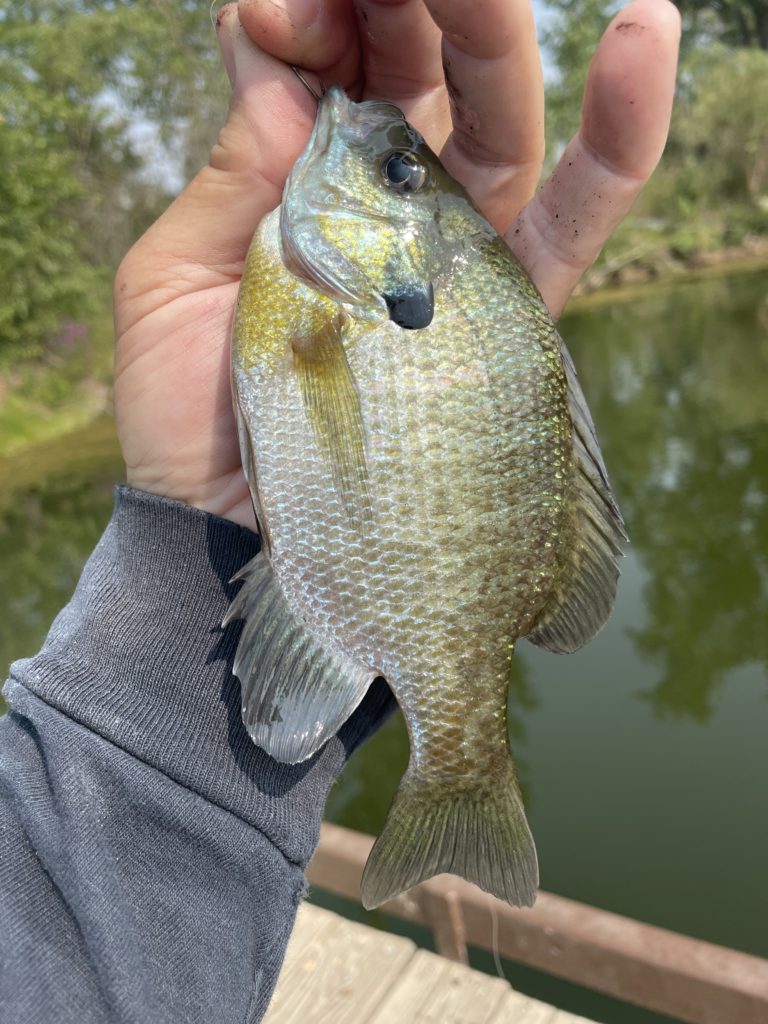 Once I find a few fish, I’ll switch things up and use a minijig under the bobber. Casting it out and slowly retrieving this rig is an excellent way to stir up the aggression in a school. I like to cast the jig way beyond brushy structure and slowly bring it back next to the submerged vegetation. Depending on the water clarity, I’ll use jigs in pink/white, white, motor oil and yellow/black colors to see what the fish are hitting. Honestly, if the jig has enough movement, I rarely see a color preference.
Once I find a few fish, I’ll switch things up and use a minijig under the bobber. Casting it out and slowly retrieving this rig is an excellent way to stir up the aggression in a school. I like to cast the jig way beyond brushy structure and slowly bring it back next to the submerged vegetation. Depending on the water clarity, I’ll use jigs in pink/white, white, motor oil and yellow/black colors to see what the fish are hitting. Honestly, if the jig has enough movement, I rarely see a color preference.
While I do occasionally toss just a jig, it’s tough to put down the bobber-jig combo. If nothing else is working, I’ll toss the small minijig and try and keep it off the bottom. While I have caught fish bouncing these small jigs off the substrate, I’ve had more success casting near submerged cover and slowly retrieving the lure 2 to 4 feet below the surface.
When I’m fishing deeper water and in areas without visible structure, I’ll toss one of my favorite presentations. Rigging a small hook with a chunk of nightcrawler or a few redworms, I’ll cast this offering out without weight and let it sink. Fish are curious and as soon as they detect a surface disturbance, they’ll swim over to investigate. A natural, sinking bait presentation will also pique their interest.
This presentation involves a little bit more finesse. Due to the weightlessness of the offering, you really must pay attention to the sinking line. I look for any change of direction, slight jerks or ticks, that may indicate a fish has just picked it up. During pre-spawn or post-spawn activity, this technique is what I go with first.
Last year, with a little free time, I decided to dust off a small trout rod and head to one of
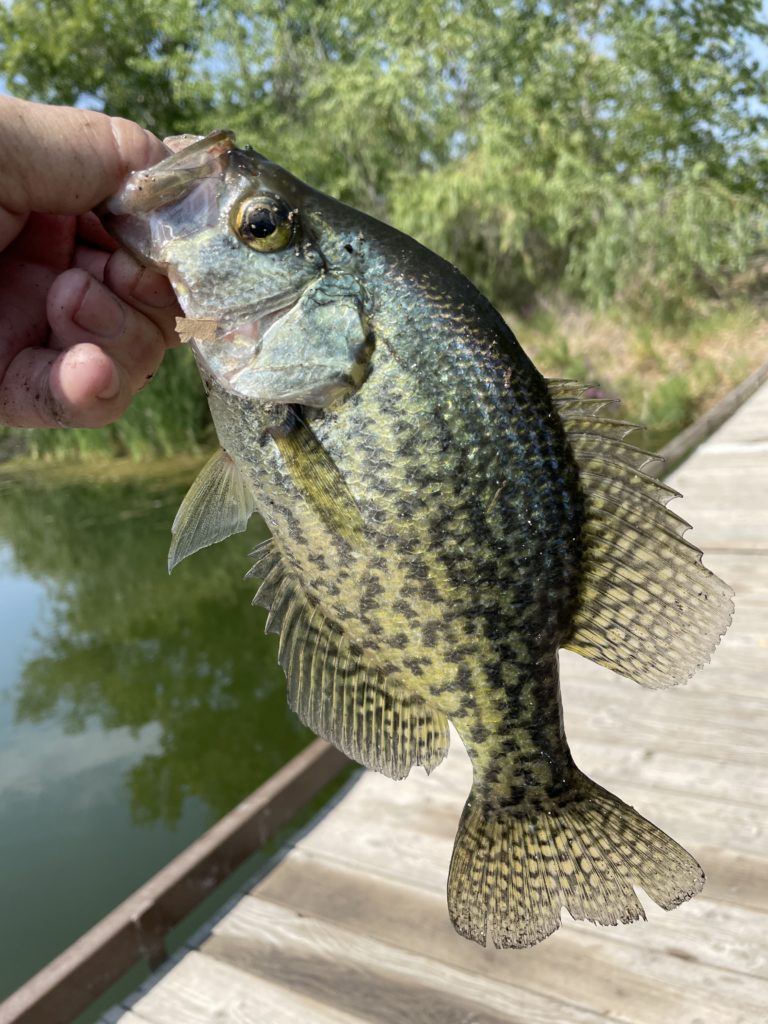
the local lakes. My goal was to just pack light gear-wise, walk the shore and kill a couple of hours. Despite the lower lake level, I was having a tough time locating any submerged vegetation. After checking water temperature and locating a nice cove, I tossed out a chunk of worm on a hook. A few seconds after it hit the water and started to sink, the line twitched once and started to move. A quick hookset, and I had a nice-sized bluegill on. Over the next hour, I caught and released a dozen panfish just walking the bank.
Pan fishing has always been one of my favorite types of freshwater fishing. It’s easy to do and involves very little effort. It’s also an awesome way to get kids involved in angling. As the days begin to warm, spend some time at the local lakes with the kids fishing for one of the most abundant freshwater species out there. For me, it’s an awesome way to step back to where it all started and have a blast while doing it.
